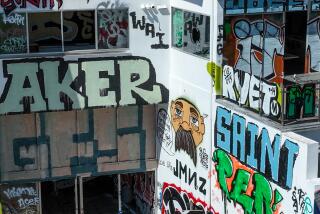Preservation Costs Often Prohibitive : ‘Landmarking’ of Churches Outrages Clergy
- Share via
NEW YORK — If an old church catches the fancy of architectural buffs, it might find itself forced to put most of its funds into maintaining its aged walls rather than into its working ministry.
Some church officials see the “landmarking” of old buildings for the sake of preservation as a blatant infringement on religious rights.
“The ‘landmarking’ of churches by a governmental agency is one of the most outrageous violations of religious liberty in the United States in the 1980s,” says the Rev. Dean Kelley, church-state expert for the National Council of Churches.
“It is becoming a national problem,” he says, citing litigation in six states and disputes in numerous others involving Roman Catholic, Protestant and Jewish structures.
He predicts “more and more of these cases” until the U.S. Supreme Court applies principles, he said, to safeguard “religious liberty from this particular kind of governmental interference.”
A legal challenge to it was appealed to the high court for the first time in September by Manhattan’s United Methodist Church of St. Paul and St. Andrew, a deteriorating 1897 terra-cotta edifice of oddly mixed style.
Landmarking it has placed “an unfair burden upon us, forcing us to siphon off funds in essence to maintain a museum,” says the church’s pastor, the Rev. Edward C. Horne, rather than serving current needs and ministry.
The city’s 1965 law setting up a Landmarks Preservation Commission--similar to provisions enacted widely elsewhere--requires that a building designated a landmark must be kept in its original form and materials.
“Under landmarking, open season has been declared on religious ministry,” says the Rev. N.J. L’Hereaux Jr., executive director of the Queens Federation of Churches and chairman of the New York State Interfaith Commission on Landmarking of Religious Property.
He says landmarking regulations demand that congregations put “their first energy and resources to the maintenance of mortar and not to the church’s mission” subordinating it to “an effete view of aesthetics.”
He adds: “Anti-religious bigots, racists who object to the church’s work among the poor and overzealous idolaters called preservationists have combined forces with government in an unconstitutional effort to deprive religious congregations of the ability to use their major assets--their buildings--for their ministry.”
Sanctuary Too Large
Horne points out that his congregation of 220 no longer needs the church’s 1,400-seat sanctuary, and that its cumbersome, inefficient design “hinders our programs of outreach to the community.”
These include one of the city’s largest emergency food programs and senior citizens feeding programs, plus housing various other social service activities.
Noting that estimates place costs of repairing the building to meet landmark commission requirements at up to $2 million, he said it threatens the congregation’s survival.
“We cannot continue to exist as a congregation in a structure whose edifice is crumbling and whose maintenance and repair are beyond the means of our membership,” he says. “We wish to be free to make our own choices to carry out the ministry that we believe God has given us.”
Not until the congregation planned in 1979 to demolish the old structure and build a smaller church more suited to the congregation’s size and ministry, along with a 20-story apartment building, did a community group protest. The group asked that the church be designated a landmark.
The landmark commission, ascribing a newly concocted style to the church (“a masterful example of scientific eclecticism”) ordered it preserved, Horne said.
Kelley, of the National Council of Churches, says it “seems incredible that a municipal agency” would designate as a landmark “a church with such undistinguished and decaying architecture,” scuttling church plans for carrying on its religious mission, subjecting it to criminal penalties if the facade was not maintained.
“All this is done . . . to preserve an architectural monstrosity for the visual delectation of the ‘public,’ which has never contributed a cent to the cost of building or repairing the fabric of the church,” turning it “into a kind of museum piece” for spectators and tourists.
“It is in effect an action of municipal government to take over a church without paying for it, and to deprive its rightful owners of the legitimate use of their property for the advancement of the service of God to which it was dedicated.”
Roman Catholic, Protestant and Jewish organizations are joining in the appeal to the Supreme Court, claiming violation of the Constitution’s guarantee of free exercise of religion.
Government controls turning a church into a museum, Kelley observes, “is what happens in the Soviet Union.”
More to Read
The biggest entertainment stories
Get our big stories about Hollywood, film, television, music, arts, culture and more right in your inbox as soon as they publish.
You may occasionally receive promotional content from the Los Angeles Times.










